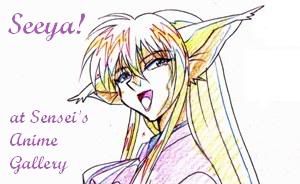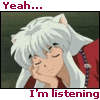glorff wrote:IThe question is; What do I have here? I have never seen a whole sequence of Key drawings before, so is this unusual or unique? I can't read any of the notes on them, so is there a clue there?

Congratulations, Glorff, on obtaining a lovely set of Saiyuki gengas. What you show are the A1-A5 keys, which were executed by a senior animator (or "gengaman") at Studio Pierrot. Only the A1 shows the whole image, and a little note on the bottom of the others must mean (I'm no good at reading cursive Japanese) that his legs never move and so have to be copied from this key drawing. Son Goku moves his head and torso during the cut, and what you have are the extreme positions.
A junior animator would later copy the keys in outline and add inbetweeners that get Goku from one extreme position to the next smoothly and naturally. These outline drawings are the dougas, and sometimes you get both the gengas and dougas in the same lot. You can tell the difference because gengas (like yours) are labeled beside the character and usually have other scribbled notations, while the dougas, which were made to be scanned and then colorized digitally, are kept as clean as possible except for a little letter + number in the upper right corner. (Often the shading is even done on the back of the sketch instead of in the same drawing, as in gengas.) If the letter + number is circled, it was copied from one of the key drawings.
The A5 genga essentially says that Son Goku has some dialogue to say, and so his body will be on the A layer, while a B layer will provide a moving mouth layer (x means what you see in the drawing, and 1 and 2 call for two alternations). I think the scribbles at the top have something to do with his eyes. The red notation to his left just identifies the character: "Son Goku."
If you also got extra sheets on thin colored paper (usually yellow), you have some of the artwork from the animator responsible for Son Goku, who is often (not always) the animation director for the episode. Usually, complete images are roughs (the stage before the genga) and partial images are "corrections" or "shuusei" (the stage after the genga and before the douga).
Congratulations again! Saiyuki art is nearly always wonderful in quality and your set is no exception.


